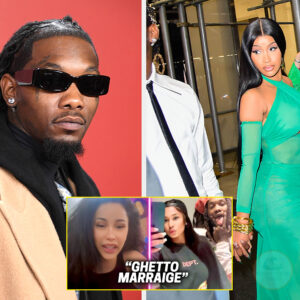In recent months, Caitlin Clark has become a household name in sports. The Iowa basketball star has not only dominated college basketball but has also ignited a broader conversation about women in sports, transcending basketball into other areas like golf. Her move into the world of professional golf, specifically her participation in the LPGA’s Pro-Am at the Anacah tournament, is shining a spotlight on a troubling contrast between how two major women’s sports leagues—the WNBA and women’s golf—have treated her rise to stardom.
In the aftermath of Caitlin Clark’s legendary college career, her every move was met with awe. Yet, when it came to the WNBA, the response was somewhat lackluster. Instead of embracing her immense popularity, there was a tendency among some players, analysts, and media outlets to downplay her potential impact on the league. The WNBA’s attitude toward Clark seemed more about gatekeeping than welcoming her into the fold, almost as if her presence was seen as a threat rather than an opportunity.

For instance, even the WNBA’s official social media platforms struggled to acknowledge Clark’s achievements properly. In one embarrassing instance, they misrepresented her assist statistics, showcasing how disconnected their internal departments were. From inaccurate stats to a general air of entitlement, the WNBA struggled to make the most of the Caitlin Clark phenomenon. The players, in particular, seemed to believe that the league had “earned” its place in the sports landscape, but were unwilling to acknowledge how much Clark could elevate the WNBA’s visibility.
The disconnect was glaring. As Clark’s influence soared, the WNBA, despite benefiting from her popularity, failed to fully embrace the change she brought. It was as if there was a reluctance to acknowledge that Caitlin Clark wasn’t just a basketball player—she was a generational talent who could bring fresh eyes and a new kind of excitement to the sport. She made the WNBA cool without even stepping on the court yet, but the league itself did little to capitalize on that energy.
Contrast this with the way the golf world has embraced Caitlin Clark. From the moment it was announced that she would be participating in the Anacah Pro-Am, the LPGA, and the broader golfing community, went out of their way to make her feel welcome. The Golf Channel expanded its coverage of the event specifically to highlight Clark’s participation. They’ve gone so far as to include her in major promotional materials and even showcased her alongside some of the biggest names in golf like Nelly Korda and Annika Sörenstam.
:max_bytes(150000):strip_icc():focal(999x0:1001x2)/caitlin-clark-indiana-fever-042224-98889a0758fb4446b49de43719c6a748.jpg)
Rather than questioning her place, golf has seen Clark as an asset, someone who can bring fresh attention to a sport that, despite its long history, can always use more visibility. This is a stark contrast to how some in the WNBA have reacted to new stars. Golf’s inclusiveness is not just about celebrating the athletes; it’s about recognizing how they elevate the sport itself.
It’s not just about Clark’s potential in the Pro-Am; it’s about what she represents: an opportunity to make women’s sports cool. Caitlin Clark has that rare quality of transcending her sport, creating excitement and drawing in people who might not otherwise tune in to women’s basketball or women’s golf. This isn’t just about her being a good athlete—though she certainly is—it’s about the energy and buzz she generates wherever she goes.
What Caitlin Clark has done for the WNBA and what she could do for women’s golf is part of a broader cultural shift. The world of women’s sports has long been underappreciated compared to its male counterparts. But just as Tiger Woods made golf a mainstream spectacle, Caitlin Clark is making it cool to watch women’s basketball and golf. The key to her success lies in her magnetic personality and raw talent, and how these qualities make her a true global star, not just a basketball player.

When we talk about athletes who “make their sport cool,” it’s not just about wins and losses—it’s about creating a cultural moment, a buzz that transcends the game. This is what Clark has done, not only bringing visibility to the WNBA but also to women’s sports as a whole. As the gentleman from the LPGA panel noted, her inclusion in the Pro-Am “cements the message that golf is cool.” Imagine hearing something like that about the WNBA—except that you won’t. Why? Because the league is too focused on entitlement, and not on how it could be a part of the larger cultural conversation that Caitlin Clark represents.
Ultimately, Caitlin Clark’s influence in golf is a clear demonstration of how sports organizations should treat their stars. It’s about open arms and embracing the attention and love that these athletes bring. The WNBA, unfortunately, has missed a golden opportunity to do the same with Caitlin Clark. Instead of acknowledging how she has made the league cooler by association, it seems the WNBA prefers to stick to the old playbook of entitlement and exclusion.
In golf, Clark’s participation is seen as an opportunity for mutual growth and exposure. This kind of forward-thinking is what helps to propel sports into new eras, drawing in younger fans and keeping them engaged. It’s a lesson that the WNBA and many other women’s sports leagues could learn from, especially in an age where athletes like Caitlin Clark are capable of doing far more than just playing their sport—they’re changing the game.
In conclusion, Caitlin Clark represents a rare breed of athlete who doesn’t just play the game, but elevates the entire ecosystem around her. It’s time the WNBA took a page from the LPGA’s playbook and recognized the power of embracing that greatness—rather than letting it slip by unnoticed.
Relative Articles
None found





